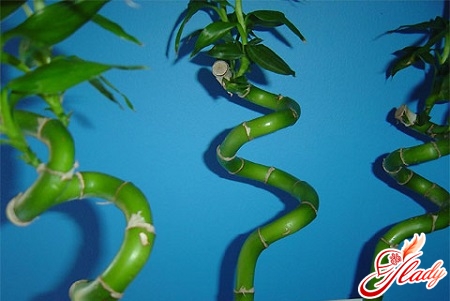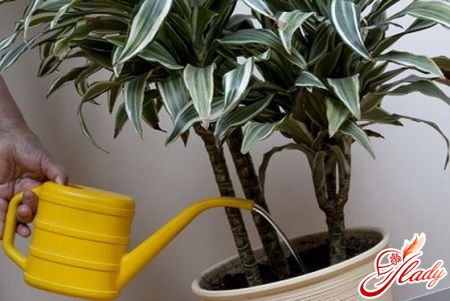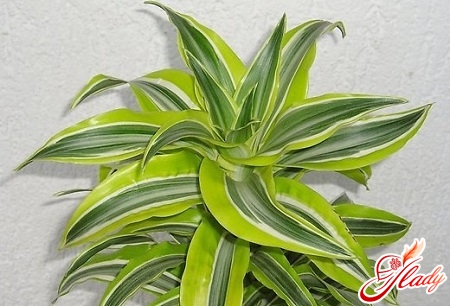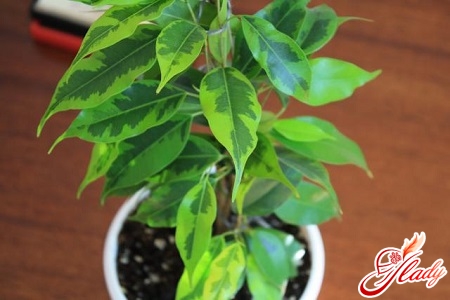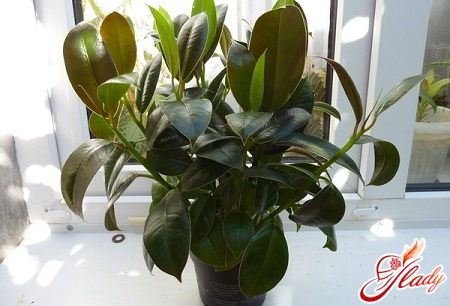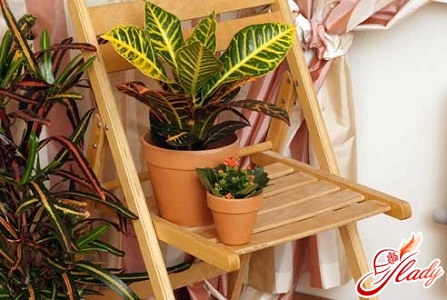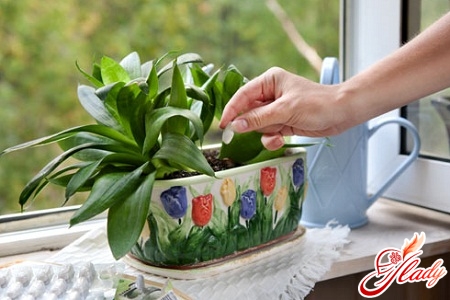 Even in ancient times, people decorated their homes with flowers.housing and clothing, used various plants as gifts. The history of indoor flowers takes us far back in time, and archaeological excavations dating back to three thousand years BC are evidence of this. And even in modern "stone jungles" people really miss living nature. Therefore, many create their own green corners on the windowsills. And real lovers of indoor plants day after day try to learn something new about their green pets, study new types of plants, select special care for each of them. The most dangerous for home flowers were and remain pests of indoor plants in the soil. There are not many of them, but they can damage the roots of plants, and therefore the flower itself as a whole. After all, if the root is sick, then the part that is above the ground will die over time. And in order to avoid this problem, you need to carefully monitor the quality of the soil in which you place the plant, replant it in time, and having noticed that the flower feels bad, the first thing you need to do is check the soil. Almost every potted flower has its own soil, which contains all the necessary components for this particular type. And if you want your flowers to please you with green leaves and buds for a long time, it is best to buy soil for planting in stores. This way you will minimize the problem of root disease. But, as they say, "forewarned is forearmed", so let's look at the types of pests of houseplants and figure out how to protect your pets from them. And also learn methods of combating harmful insects.
Even in ancient times, people decorated their homes with flowers.housing and clothing, used various plants as gifts. The history of indoor flowers takes us far back in time, and archaeological excavations dating back to three thousand years BC are evidence of this. And even in modern "stone jungles" people really miss living nature. Therefore, many create their own green corners on the windowsills. And real lovers of indoor plants day after day try to learn something new about their green pets, study new types of plants, select special care for each of them. The most dangerous for home flowers were and remain pests of indoor plants in the soil. There are not many of them, but they can damage the roots of plants, and therefore the flower itself as a whole. After all, if the root is sick, then the part that is above the ground will die over time. And in order to avoid this problem, you need to carefully monitor the quality of the soil in which you place the plant, replant it in time, and having noticed that the flower feels bad, the first thing you need to do is check the soil. Almost every potted flower has its own soil, which contains all the necessary components for this particular type. And if you want your flowers to please you with green leaves and buds for a long time, it is best to buy soil for planting in stores. This way you will minimize the problem of root disease. But, as they say, "forewarned is forearmed", so let's look at the types of pests of houseplants and figure out how to protect your pets from them. And also learn methods of combating harmful insects.
Lycra
This species of insect, although related toshrimp and lobsters, but prefer to live in the ground. More precisely, in damp soil. They are not among the most dangerous pests of indoor plants that can start in the soil, but you still need to know about them. Woodlice prefer damp places and hide in the trays of pots. This type of pest is gray and has a flat body with many legs. They prefer the night time. They can harm plants by eating their roots. However, they will not cause much damage to your plant, since woodlice are easy to detect and destroy manually. If you have plants in your house that like frequent watering, regularly check the trays of the pots, wash them, do not allow damp soil to accumulate in them. This way you will not allow woodlice to multiply and harm your flowers.
Centipedes
This type of pest of indoor plants,living in the soil is very diverse. They form a whole zoological class, which includes various insects. They have one thing in common - by eating the roots of plants, centipedes do not allow it to develop. Centipedes have a snake-like structure: their body consists of rings, and numerous legs are very difficult to notice, they are so miniature. There are two ways to infect the soil with centipedes. Either you bought low-quality soil (this also happens), or you used ordinary soil from the garden for planting. These insects can only be detected during transplantation. If you notice them in the soil, be sure to change the substrate completely, even the roots need to be cleaned of old soil, since pest eggs may remain in it, which over time can harm the fresh soil.
Swallowtails
Another name for these jumping insects issimilar to fleas - springtails. This type of pest of indoor plants also lives in the ground. Springtails reproduce very quickly, especially in a damp substrate. They feed on decaying plant remains, so they gnaw small holes on the stems located near the ground, less often - on the roots. Springtails cause the greatest harm in the wet season - in the fall, when the growth of plants stops, and it is not able to fight for life. If you notice the infestation in time, getting rid of the pests is easy. You need to cover the surface of the soil with ash or dried sand. The so-called potato traps are very effective: a raw potato cut in half is placed on the ground cut side down, and then the insects that have climbed there are collected. If the infestation is severe, it is necessary to use special solutions for watering. Here you need to consult a specialist in the store. And the best thing is to thoroughly wash the pot and sweep away the soil completely.
Nematodes
These little worms damage the roots.system, thereby causing negative changes in the above-ground part of the plant. The leaves of the flower wither and dry up, and swellings appear on the roots. These pests cause severe damage to indoor plants, it is almost impossible to cure an infected flower. Ficus, cacti, and cyclamens are especially susceptible to infection. The good news is that nematodes are rare at home, they can only be brought in with soil from the garden. However, if you are going to professionally grow plants in greenhouses for sale, then you should be wary of them.
Spider mite
Indoor Plant Pests and How to Control Themare as diverse as the flowers themselves. Insects can damage not only the roots of plants. Some of their species are dangerous for the above-ground part of the flower. One of these pests is the spider mite. It is dangerous for almost all types of houseplants, especially if you take them out onto the balcony or into the yard during the warm season. The presence of the mite can be noticed by the web stretched between the leaves. These pests eat the leaves from the inside, causing the leaves to lose color and curl inward. Flower buds damaged by the mite can dry out and fall off without ever blooming. Spider mites attack en masse during the hot season, the best prevention against it is maintaining humidity, so spray the plants more often. To destroy pests, you need an acaricide solution, which can be purchased at a specialty store. After treatment, wrap the plant in polyethylene. This will protect other flowers from infection and create more humidity, which will speed up the death of the mites.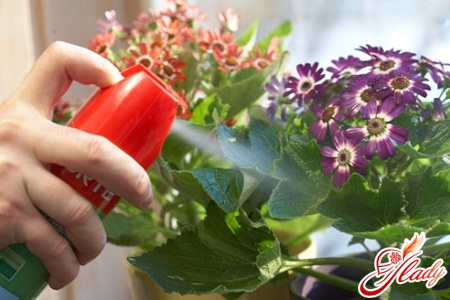
Aphid
A very common pest, but alsoIt is quite easy to detect. Aphids are dangerous for all types of indoor plants, especially in summer. Some varieties of these insects have wings. Flying into open windows, aphids occupy the flower, sucking the juice from the leaves and stems. Thus, the plant weakens and stops developing. If you have detected pests in time, it is not difficult to fight them, just wash the plant with soapy water, and then with clean water. If the aphids have already thoroughly settled on the flower, it is treated with special solutions, such as Inta-vir, Karate or Fas. You can also use poisons of plant origin: wormwood or tobacco infusion. Regular treatment will help you avoid attacks by these insects.
Whitewoods
This type of pest is very similar to the winged one.aphids. Whiteflies are very small, about three millimeters. They attack the inside of the leaves and drink the juice from them. If you do not take action in time, the leaves wither, turn yellow and fall off. Since whiteflies come from tropical countries, their habitat is very warm and humid rooms. The most likely victims of these insects are plants with thin leaves, as well as flowering plants such as azalea, primrose, hibiscus. A good preventive measure against whiteflies is to ventilate the room and lower the temperature. You can treat the plant with an insecticide solution: this should be done once a month. It is advisable to prevent the flower from becoming infected, since it is quite difficult to fight this pest.
Weevils and Caterpillars
These insects are about one and a half inches long.centimeters and hard wings. They are especially dangerous for begonias and azaleas. Eating the edges of the leaves, weevils cause irreparable harm to the plant, and their larvae feed on the roots. These pests attack the flower from both sides, so the plant stops developing, quickly weakens and eventually dies. It is necessary to fight weevils with the same insecticide. If the infestation was severe, then the procedure should be repeated again, in about a week. Everyone knows about these pests. Caterpillars are the larvae of butterflies that feed on the foliage of trees and plants. In the garden, on the veranda or on the balcony, your flowers risk becoming food for them. If you do not notice the pests in time, the plants may be left without leaves at all. It is easy to fight caterpillars, you just need to remove them with your hands and destroy them. However, insecticide prevention will be just as effective.
Worms and Shields
This is truly a disaster for all indoorplants. They are quite difficult to fight, since they reproduce quickly, replacing several generations per year. The insects are protected by a shell similar to a mussel shell. Forming motionless columns on stems and leaves, scale insects suck the juice out of the plant. Australian mealybugs (false ladybugs) also belong to this category of pests. They differ from scale insects only in that they sometimes move around the plant. Mealybugs take root well at home, since room temperature is optimal for their development. Root scale insects, relatives of mealybugs, are slightly smaller in size. They live and reproduce in the roots. These pests are especially dangerous for plants with dense leaves, secreting dew that causes burns. Due to the fact that scale insects and mealybugs spread very quickly, they can cause irreparable harm to the plant. Cracks appear on the stems, the leaves turn yellow, then the branches die and the flower dies. There are several ways to fight these insects. First, you need to wipe the damaged areas with an alcohol solution, wait about twenty minutes and remove the pests from the plant with a damp cotton swab. Next, you need to spray the flower with an insecticide. Fighting root scale insects requires replanting the plant in new soil. Before replanting, the roots must be thoroughly washed with running water. And for another three months, water the plant with a half-diluted solution of insecticide.
Miners and Thrips
Leaf miners are a type of fly.They lay eggs on leaves and stems, and their larvae gnaw long tunnels there. If there are few larvae, it simply spoils the appearance of the plant, and when the infestation is severe, the flower stops growing and developing. Since miners are rare guests in houses and apartments, there is no need to treat plants with poison, just remove the damaged leaf as soon as you notice traces left by the miners. Thrips are very small insects, no more than a millimeter in size. An attack by thrips can be confused with an attack by a spider mite, but this pest does not leave a web in the plant. They reproduce very well in warm rooms. Despite the fact that thrips have a pair of tiny wings, they are sedentary. Harm is caused not only by adult individuals, but also by insect larvae. They drink liquid from the leaves of the plant, which provokes a stop in development, the leaves dry out, because they do not have enough moisture and air. Buds damaged by this pest are deformed, white spots form on them, and the flower dies without having time to bloom. Thrips do not like the smell of mothballs, so a few of its balls will not hurt near the most vulnerable plant, for example, near cyclamen or begonia. If infection has occurred, it is necessary to treat the flower with an anti-aphid agent, repeating this procedure in five to six days. You can also spray the plant with an infusion of onion or garlic (1 teaspoon per 1 glass of water). Flowers that cannot be sprayed are treated as follows: finely chopped garlic is placed near the plant and the flower and the “medicine” are covered with polyethylene for two to three hours.
And finally...
There is only one conclusion to be drawn from this article.— there are quite a lot of pests of indoor plants, and their appearance is a real nightmare for an avid gardener. However, this is not as scary as you might imagine, because effective methods of control have already been developed for all of them. And if you catch yourself in time, the plant will fully recover and will delight you for a long time. Growing indoor flowers is a very exciting hobby. But only knowledge and, of course, patience will help you achieve some success in this activity. The main thing that a gardener should remember is that prevention never hurts. Regularly inspect your pets, check every leaf, every branch. The sooner you find traces of pests, the easier and faster the fight against them will be. The development and flowering of indoor plants depends only on their owner. Treat your flowers like best friends, understand them, and even talk to them sometimes. Believe me, it's better than pouring fertilizers on plants, because they won't help if there is no proper care, attention and love! We recommend reading:




